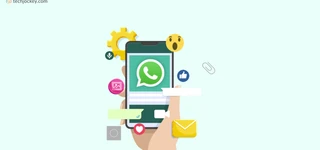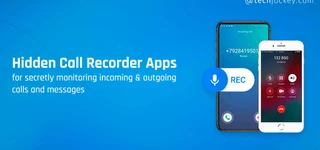Phishing, Vishing and Smishing: What’s the Difference?

Cybercriminals continually evolve their tactics to deceive individuals and organizations. Among the most prevalent and deceptive methods are phishing, vishing and smishing. While they share the common goal of extracting sensitive information, each employs different communication channels and techniques. Understanding these methods is crucial to safeguarding personal and professional data.
1. Phishing: Deceptive Emails
Phishing involves fraudulent emails that appear to come from reputable sources, aiming to trick recipients into revealing personal information or clicking on malicious links. It is the broadest and most well-known category of these attacks.
It typically involves fraudulent emails designed to appear as though they come from legitimate organizations—like banks, government agencies, or well-known brands. The goal is to lure recipients into clicking malicious links, downloading malware, or providing sensitive information.
How Phishing Works:
- Spoofed Emails: Attackers send emails that mimic legitimate organizations, such as banks or service providers.
- Urgent Language: Messages often create a sense of urgency, prompting immediate action.
- Malicious Links: Emails contain links leading to fake websites designed to steal credentials or install malware.
Common Targets:
- Personal banking information
- Corporate login credentials
- Social Security numbers
- Cloud storage logins
Recent Trends:
- Quishing: A new form of phishing using QR codes to direct users to malicious sites. Scammers exploit the trust in QR codes to bypass traditional email filters .
- Man-in-the-Middle (MitM) Attacks: Advanced phishing techniques that intercept communication between users and legitimate websites, potentially bypassing two-factor authentication .
Protection Tips:
- Never click links in unsolicited emails.
- Check the sender’s email address carefully.
- Use multi-factor authentication on all accounts.
- Keep antivirus software updated.
Suggested Read: What is Phishing?
2. Vishing: Voice-Based Scams
Vishing (short for voice phishing) is a type of phishing scam carried out over the phone. It involves phone calls where Cyber criminals pose as representatives from legitimate institutions such as your bank, a tech support line, or even the customs officers to extract personal or financial information.
How Vishing Works:
- Caller ID Spoofing: Attackers manipulate caller ID to appear as trusted organizations.
- Social Engineering: Use of persuasive language to create urgency or fear.
- Information Extraction: Victims are prompted to provide sensitive data over the phone.
Common Scenarios:
- Impersonation of Authorities: Scammers pose as IRS officials or bank representatives.
- Tech Support Scams: Calls claiming to be from tech support, warning of computer issues.
- Emergency Scams: Claims of family emergencies requiring immediate financial assistance.
Protection Tips:
- Don’t trust caller ID alone—it can be spoofed.
- Hang up and call back on official numbers.
- Never give out sensitive info over the phone unless you initiated the call.
Suggested Read: What is Vishing?
3. Smishing: SMS Text Scams
Smishing combines SMS and phishing, involving fraudulent text messages that lure recipients into revealing personal information or clicking on malicious links.
How Smishing Works
- Deceptive Messages: Texts appear to be from trusted sources, like delivery services or banks.
- Malicious Links: Messages contain links leading to fake websites or malware downloads.
- Urgent Language: Creates a sense of urgency to prompt immediate action.
Common Smishing Tactics:
- Fake delivery notifications (e.g., “Your package is held at customs”)
- Prize or gift card offers
- Fake account security alerts
Recent Trends:
- Delivery Scams: Fake messages claiming issues with package deliveries, prompting users to click on malicious links .
- Toll Payment Scams: Texts alleging unpaid tolls, directing victims to fraudulent payment sites .
Protection Tips:
- Don’t click links in text messages from unknown senders.
- Report smishing texts to your mobile carrier
- Block and report suspicious numbers.
Suggested Read: What is Smishing?
Phishing vs Vishing vs Smishing – Detailed Comparison
| Category | Phishing | Vishing | Smishing |
|---|---|---|---|
| Communication Channel | Voice calls (phone) | SMS/Text messages | |
| Primary Medium | Internet/email clients | Telephone networks | Mobile messaging services |
| Common Sender Spoofing Methods | Fake domain names, display name spoofing | Caller ID spoofing | Fake short codes or spoofed phone numbers |
| Impersonation Targets | Banks, government, cloud services (e.g., Google) | Banks, IRS, tech support, law enforcement | Delivery companies, mobile carriers, banks |
| Message Format | Email with HTML/text, attachments, hyperlinks | Live or automated voice calls | Short texts with clickable URLs |
| Typical Call to Action | Click a link, open attachment, enter credentials | Press a key, call a number, share info verbally | Click link, call number, input OTPs or details |
| Psychological Triggers | Urgency, fear, curiosity, reward offers | Fear, urgency, authority pressure, emotional manipulation | Fear, urgency, delivery failure, payment errors |
| Malware Delivery? | Yes, via malicious attachments or links | Rare, but can guide to malware sites | Yes, via malicious URLs in SMS |
| Threat Level | High – widespread and automated | Medium to high – targeted, emotional manipulation | Medium – broad targeting, mobile device risk |
| Detection Difficulty | Moderate – many tools detect phishing emails | High – voice spoofing is harder to filter | Moderate – SMS filters exist but aren’t foolproof |
| Real-World Examples | Fake PayPal or Microsoft emails with login pages | IRS lawsuit scam calls, “Your account is locked” | “Track your package” text with suspicious link |
| User Demographic Targeted | All ages, but especially working professionals | Elderly, less tech-savvy users | Smartphone users, especially younger demographics |
| Common Outcomes | Stolen credentials, malware infection | Financial fraud, identity theft | Credential theft, financial fraud, malware |
| Prevention Best Practices | MFA, email filtering, training, anti-phishing tools | Call verification, never share info over phone | SMS security tools, ignore unknown links/codes |
| Regulatory Responses | Email security frameworks (SPF, DKIM, DMARC) | FCC regulations, telecom blocking tools | Carrier reporting tools (e.g., 7726 short code) |
Conclusion
Phishing, vishing and smishing are pervasive threats in the digital age, each exploiting different communication channels to deceive victims. Awareness and vigilance are your first lines of defense. By understanding how these scams operate and implementing protective measures like using cybersecurity software etc, you can significantly reduce the risk of falling victim to such attacks.
The Techjockey content team is a passionate group of writers and editors dedicated to helping businesses make informed software buying decisions. We have a deep understanding of the Indian software market and the challenges that businesses face when choosing the right software for their needs. We are committed... Read more




























